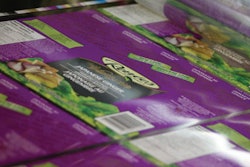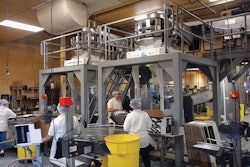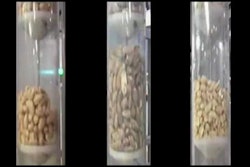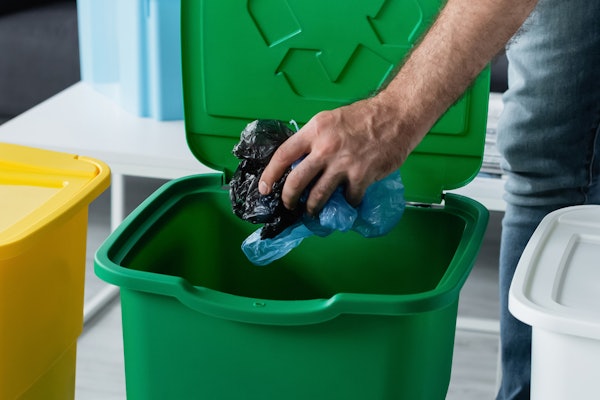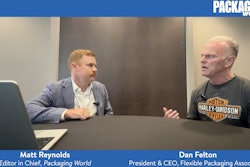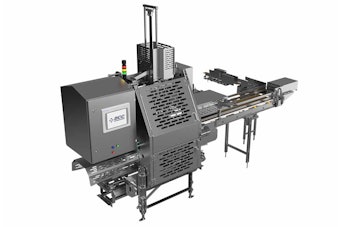Manufacturers seeking ways to reduce costs while maintaining or
increasing efficiency should employ a supply-chain perspective to their
packaging by identifying and maximizing sustainable solutions, which
can often generate significant savings.
The following three critical packaging process elements outline tactics
that companies can start employing today to optimize their supply
chain.
1. Design for sustainability
Approximately 70% of an organization’s sustainability goals can be
addressed at the package design or the “anticipatory design” stage,
during which manufacturers should anticipate sustainability impacts and
eliminate waste and problems.
Elements to consider in the anticipatory design phase include:
•
Evaluating life-cycle impacts
• Anticipating energy use over the package’s life
• Assessing the impact of materials on end-of-life scenarios
• Designing to facilitate material recovery
For example, the new flat-top, squared-off milk jugs available in
refrigerated cases at Costco and Sam’s Club eliminate secondary
packaging—the plastic crates used with traditional jugs. The flat-top
design of the new container allows direct stacking with only tier
sheets on pallets. The result is storage of 50% more milk in the same
space. The package increases efficiency throughout the supply chain,
including refrigerator space at the retail store, and cuts the number
of delivery trips needed by 50%.
Overall supply-chain considerations should be incorporated in all
packaging designs, especially when manufacturing offshore. This can be
accomplished by designing packaging domestically to achieve supply
chain efficiencies, while sourcing packaging locally near the
manufacturing location. A few tips when working with suppliers overseas
include:
• When sourcing corrugated boxes, it is important that you ensure that
the linerboard combination is equivalent to the design specification,
particularly in different regions of the world where it is harder to
control materials and percent of recycled content, and board and paper
weight can vary. Detailed packaging specifications and performance
requirements will ensure that you achieve comparable levels of kraft
liner to match the required overall package performance.
• Be sure to test for potential supply-chain distribution hazards. For
example, supply-chain conditions for shipping from China are different
than shipments within North America. These considerations need to be
included when setting package performance parameters. Most shipment
conditions can be replicated in a test lab to predict the package
durability and performance through the distribution cycle.
2. Right-weight packages
If a manufacturer has legacy packaging that wasn’t designed for
sustainability, there is an opportunity to achieve savings through
right-weighting. Often, packages are designed without a thorough
assessment of the supply chain.
“Right-weighting” a package is typically done after the package has
been produced and shipped. Testing a package can help you validate if
it was over-engineered for a particular application. Perhaps it was
designed as a double-wall box when a single-wall box would have
adequately protected the product. Or perhaps a container included 2 in.
x 6 in. wood supports when 1 in. x 6 in. supports would have provided
adequate protection. Testing can help you examine materials and weights
to see if you can modify or change a package or its materials to
realize savings without sacrificing performance.
3. Reduce fiber and add reinforcement
Packaging material consumption can be significantly reduced through the
use of specially designed packaging reinforcement technologies.
Reinforcing critical stress areas of corrugated shippers is gaining
momentum. Box designers are refining techniques that have been around
for decades to deliver sustainability and cost savings.
One example is a reusable corrugated shipper for snack foods. After
each use collapsed shippers are returned for reuse. Throughout
the multiple uses, the top flaps of the box are repeatedly opened and
closed, often creating tears in the vertical scorelines. To remedy this
problem, the shipper was redesigned to incorporate a technology that
reinforced the critical stress areas. This process helped limit tears
from propagating down the box scorelines, extending the box life for
this particular application by 46%, with trips per box increasing from
3.7 to 5.4. This resulted in 5.8 million fewer boxes needed for the
same number of trips, which saved approximately 4,000 tons of fiber or
80,000 trees annually. And reinforcement can be added without
compromising the recyclability of the box.
When designing your packaging to achieve sustainability goals, be sure
to take a comprehensive supply-chain perspective. You will not only
ensure safe and reliable transport, but you can maximize your savings
while helping the environment.




